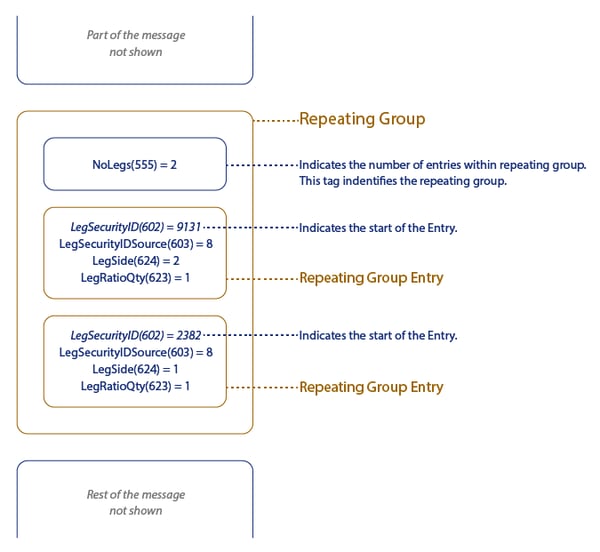Understanding FIX Protocol Standards Repeating Groups
FIX Protocol Standards Repeating Groups allow a subset of FIX tag fields to repeat multiple times within a FIX Message.
While this may sound simple enough in theory, in practice this is an area of the FIX Protocol Standards that can become confusing. The complexity is working with nested Repeating Groups, as Repeating Groups can appear inside another Repeating Group with more than one level of nesting - and these can also include custom venue specific FIX Dictionary variant Repeating Groups.
The diagram here shows an example of the structure of a FIX Protocol Repeating Group:

Confused by FIX Repeating Groups?
To make this complexity less confusing, we have provided a concise technical information guide on how FIX Repeating Groups work along with outline examples, specific constraints when used, and conventions of use.
If you want to dig deeper into specific code examples in C# / .NET, C++, and Java – then see the reference Programming Guide sections showing how to work with the respective OnixS FIX Engine implementation APIs for FIX Repeating Groups.
The OnixS FIX Engine implementation distributions include fast-start reference implementation source code samples. These include advanced code samples specifically illustrating working with FIX Repeating Groups. You can download an OnixS evaluation distribution and look at the samples/ Repeating Group source that demonstrates how to create a Repeating Group, create a nested Repeating Group, and read nested Repeating Group values.
Request Evaluation Access
To request a free evaluation of the OnixS FIX Engine SDK, you can register to download a 30 day evaluation of the solutions specific to your target venue and code base here.